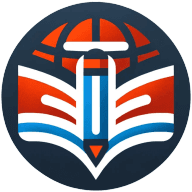6 Ways Curriculum Connections Create Powerful Learning Moments for K-12 Students
Discover how curriculum connections can create meaningful learning experiences for K-12 students through real-world applications. This article shares valuable insights from education experts who have witnessed transformative learning moments in their classrooms. The story of a student reconnecting with their birth country through Google Earth demonstrates just one powerful example of how thoughtful curriculum design impacts student engagement and personal growth.
Google Earth Reconnects Student With Birth Country
I was teaching a lesson from Writing Our Worldtm to a student adopted from Guatamala, and we used Google Earth to explore the town she was born in, something she had never done before. She's 18. Writing Our Worldtm is a free teacher membership with scripted lesson plans and editable student materials that walks any students 3rd-12th grade how to write a multi-paragraph essay, starting at the sentence level. It uses geography and Google Earth as it's primary content, layering helpful Velcro on the brain for students in the form of world geography background knowledge. I will never forget the 10 minutes we spent exploring Guatamala City and I got to watch someone reconnect, though in a digital way, to a place that she comes from. It was so beautiful. If you teach students, they probably need explicit instruction in learning how to write multi-paragraph essays. Most students in the US struggle with this, and preserving the core components of written expression in our young people is worth the effort.
Community Partnerships Extend Learning Beyond Classroom Walls
Community partnerships extend education beyond classroom walls by connecting students with experts, organizations, and experiences that bring learning to life. Local businesses, museums, environmental centers, and government agencies offer authentic contexts where academic knowledge becomes immediately relevant and applicable. Students develop meaningful relationships with community mentors who demonstrate career pathways and professional skills that textbooks alone cannot fully illustrate.
These partnerships often provide resources and expertise that would otherwise be unavailable, especially in schools with limited budgets or specialized equipment. The sense of purpose that comes from contributing to real community needs motivates students far more powerfully than hypothetical scenarios or practice problems. Reach out to potential community partners this week to discover how they might enrich your curriculum and extend learning opportunities for your students.
Cross-Disciplinary Projects Spark Meaningful Student Connections
Cross-disciplinary projects connect different subjects in ways that spark student curiosity and make learning more meaningful. When students explore topics through multiple lenses such as math, science, and art simultaneously, they develop deeper understanding and see how knowledge connects. Teachers who design projects spanning multiple subjects report higher levels of student motivation and creativity in their classrooms.
These integrated learning experiences mirror how problems are solved in the real world, preparing students for future challenges they will face. Students retain information better when they can apply it across different contexts rather than keeping subjects in separate boxes. Consider implementing at least one cross-disciplinary project each quarter to ignite passion and create more relevant learning experiences for your students.
Technology Tools Visualize Complex Educational Concepts
Technology integration transforms traditional learning by providing tools that were unimaginable in classrooms just a generation ago. Digital resources allow students to visualize complex concepts, collaborate across geographic boundaries, and receive immediate feedback on their work. Virtual reality field trips transport students to historical sites and natural wonders without leaving the classroom, creating emotional connections to learning that text alone cannot provide.
Educational apps and platforms adapt to individual learning needs, allowing teachers to personalize instruction while managing diverse classrooms more effectively. Students develop digital literacy skills essential for future success while using technology to demonstrate their understanding in creative ways beyond traditional assessments. Explore at least one new educational technology tool this month that could transform learning experiences in your classroom.
Cultural Relevance Creates Sense of Belonging
Cultural relevance in curriculum creates powerful learning moments by honoring the diverse backgrounds and experiences students bring to school each day. When students see themselves reflected in learning materials and examples, their sense of belonging increases dramatically, removing barriers to engagement. Educational research consistently shows that students achieve at higher levels when curriculum connects to their cultural identities and community contexts.
Teachers who thoughtfully incorporate culturally responsive materials find that classroom discussions become richer and more inclusive as students share perspectives based on their unique experiences. Cultural relevance extends beyond simply featuring diverse names in word problems to deeply examining how different cultures have contributed to knowledge in every subject area. Take time to audit your curriculum for cultural inclusivity and make meaningful adjustments that will enhance student engagement across all demographic groups.
Real-World Applications Transform Abstract Concepts
Real-world applications transform abstract classroom concepts into tangible experiences students can truly grasp. When mathematical formulas help students design an actual playground or science principles explain everyday phenomena they observe, learning becomes immediately useful rather than theoretical. Students develop stronger neural connections and memory retention when they can connect classroom knowledge to situations they encounter in daily life.
This approach to curriculum naturally differentiates instruction as students bring their unique experiences to bear on practical problems with multiple solution paths. Teachers who consistently incorporate authentic scenarios into lessons report higher test scores and improved student attitudes toward challenging subjects. Start searching your community for real-world connections to your curriculum that will make abstract concepts concrete for every student in your classroom.

